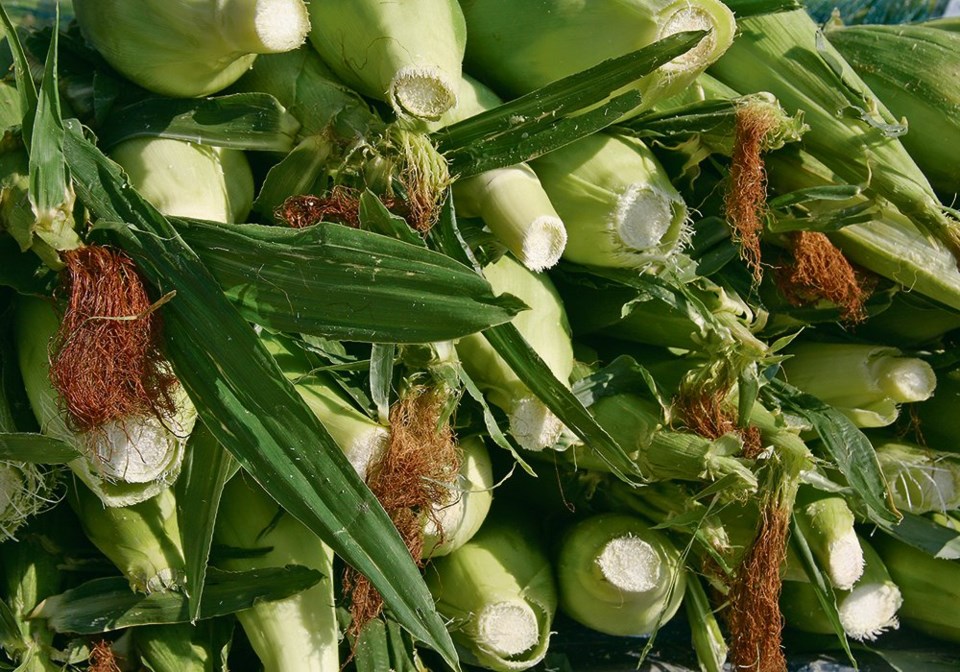WESTERN PRODUCER — Sweet corn thrives in its own crowded company and, when planted at high densities, its yield potentially increases.
Recent research from the University of Illinois looked at the historical tolerance of corn density since the 1930s and results showed it has steadily contributed to genetic yield gain in field corn.
The study focused on crowding tolerance in hybrids from 1934 to 2014. Researchers found that marketable ear mass increased by 2.58 tonnes per acre over the 80-year time period, or 0.32 tonnes per acre per decade when grown at high densities.
“Over time, steady improvement in plant density tolerance has contributed greatly to genetic yield gain in field corn,” said Daljeet Dhaliwal, a doctoral student in the Department of Crop Sciences at the University of Illinois.
While recent research indicated plant density tolerance in modern sweet corn hybrids could be exploited for yield gain, historical changes in density tolerance were unknown.
“My lab has been studying plant density tolerance in sweet corn for several years,” said Martin Williams, ecologist and adjunct professor in the crop sciences department. “What initially started with a request by the vegetable industry for research to minimize seed cost turned into a series of experiments that first identified variation in density tolerance among commercial hybrids, to developing methods to identify density tolerant germplasm, identifying optimal plant densities, and the physiological basis for density tolerance.”
Williams said he was inspired by the pioneering crop research of the late Donald Duvick, affiliated agronomy professor with Iowa State University, on historical changes in density tolerance of field corn. Williams believed it would be valuable to do similar work on sweet corn and explored the idea with leaders in the seed industry.
“The research could not have been done without the sweet corn seed industry,” he said. “Several of the hybrids that represented important eras in sweet corn production were not commercially available. Multiple individuals from multiple companies recreated these earlier hybrids.
“They were able to do this as long as they knew the hybrid’s pedigree and they still had the inbreds to make the hybrid. If they had both of these components, then they made crosses in the field to produce the seed of the hybrid we needed.”
An interesting perspective is that, over those decades, crowding density was not a target by early breeders and farmers as opposed to other valued traits such as eating quality and disease resistance.
“My understanding is that, until the last decade, crowding tolerance was not a breeding target for most sweet corn breeding programs,” said Williams. “Most likely, general improvements in stress tolerance improved density tolerance.”
The research team grew one or more hybrids representing each decade at low (4,000 plants per acre) and high (32,000 plants per acre) densities over three years. They then measured the characteristics important for growers and processors, including key harvest metrics like marketable ear mass, crate yield and recovery.
“The mass of marketable kernel mass, relative to ear mass (with cob, husks, and silks), expressed as a percent, is what we call recovery,” said Williams. “Recovery ranges from about 30 percent to 45 percent, depending largely on the hybrid but also on the environment. We conducted a study with 15 hybrids that were developed and released over an 80-year period. When we plot recovery over year of hybrid release, recovery remains constant.
“In other words, the percent marketable kernel mass on ears from hybrids in the 1930s are similar to the most recent hybrids. At least that’s what we see with these 15 hybrids. This isn’t a surprise because most breeding programs weren’t cutting kernels and measuring recovery until recently.”
Williams believes sweet corn breeders have been selecting for ear mass yield but not necessarily density tolerance. They saw an increase in ear mass per acre over time at high densities, showing improvement in density tolerance. One possibility is that selection for general stress tolerance has enabled modest increases in plant density, which has also improved ear mass per acre.
Modern plants have fewer tillers than older hybrids, so the individual plants are more compact with less vegetative tissue.
“Having a more compact plant may enable (a crop grower) to crowd more plants into a unit of area, or acre,” he said. “On an area basis, it is best to have one ear per plant but there are limits on how large that ear will grow. To increase ear mass effectively, one might aim to crowd more plants into a unit of area without compromising ear size or kernel traits. Density tolerance is a large driver of yield.
“That 小蓝视频 said, there could be other factors that also improve crop yield such as resistance to specific diseases.”
Williams added that climate change is a major threat to crop production globally, as are herbicide resistant weeds.
“A quantitative understanding of how weather variability affects crop production would be valuable in determining how we might adapt sweet corn, and many other crops, to climate change,” he said. “For instance, field corn is particularly sensitive to excessive heat or drought near silking, especially when coupled with weed interference.
“Based on the comparatively smaller, less-competitive nature of sweet corn plants, I hypothesize such adverse conditions will have a much larger effect on sweet corn than field corn. We want to find out.”
The research was published in the journal Frontiers in Plant Science.




